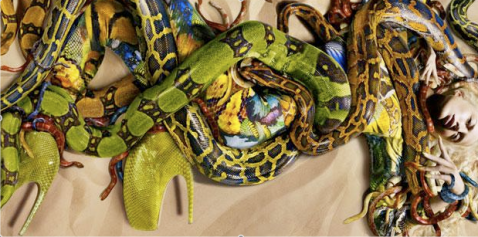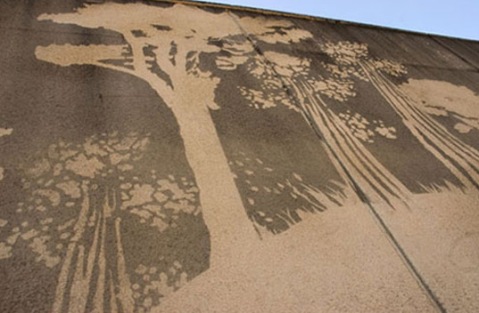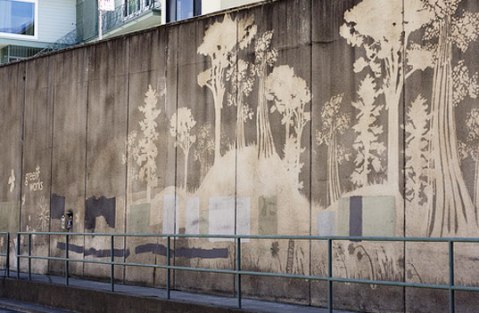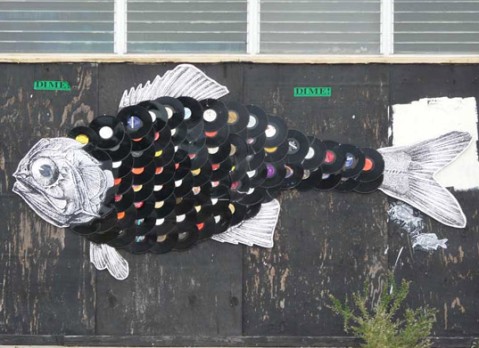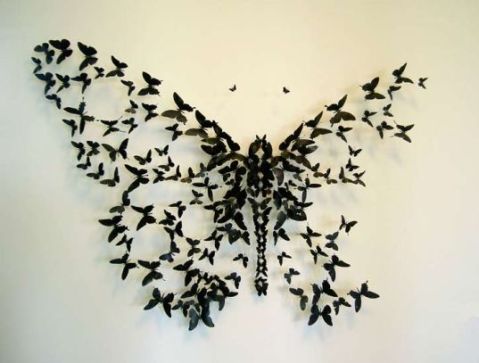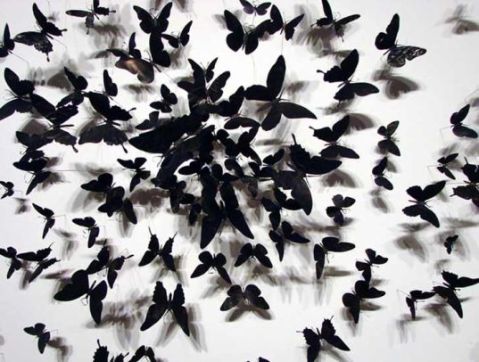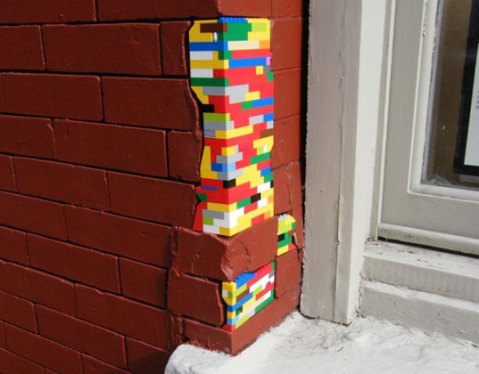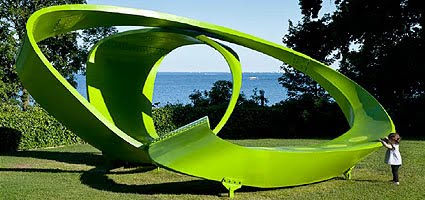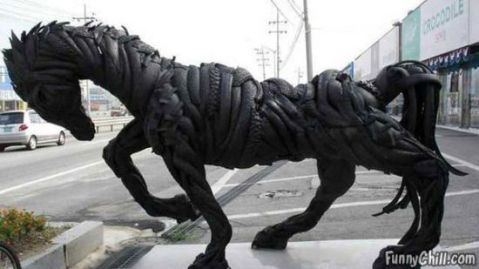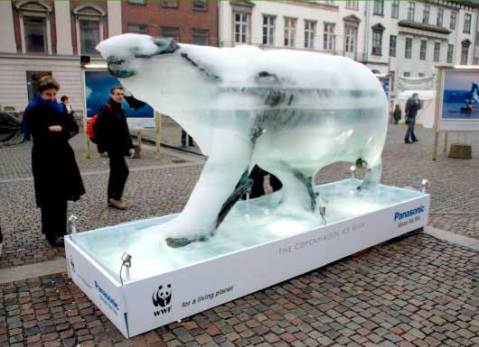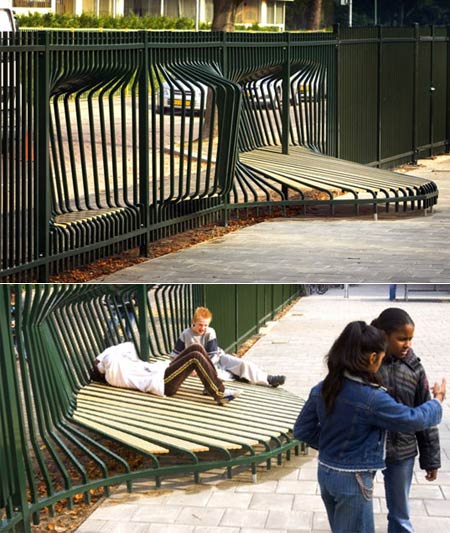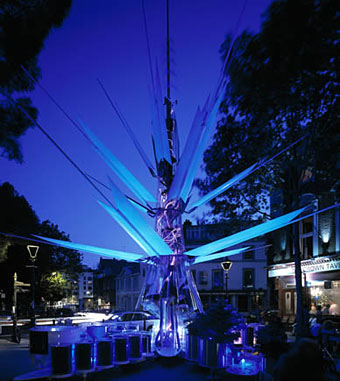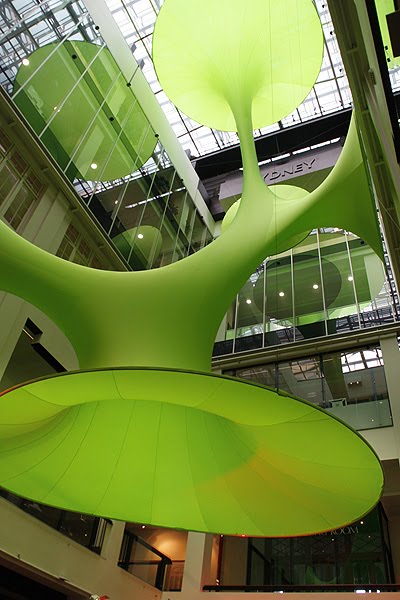A few thoughts…..
Are there any borders and boundaries?? in terms of factors such as the use of a range of medias. stretching across a long spectrum of disciplines. Is it possible to create a design that uses all forms of medias thus proving that there don’t have to be boundaries.
I think it is fair to say that good design will always push boundaries whether these be ethical or moral etc. In my opinion i think a designer has to push the borders and boundaries in order to get their message across strong and clear. Good design is made good by provoking a reaction. A good example of this may be an outrageous or odd advertising campaign. The observer may be confused or even not agree with it but it provokes a reaction therefore it has worked and served its purpose.
This for example is an advertising campaign for Alexander McQueen’s SS 2010 python armadillo shoes that are over a foot tall. This ad is pretty outrageous in its own right, a model covered in snakes. The image screams edgy and alive design and the huge range of bright colours is extremely appealing to the eye. These shoes have had no where near a lack of media coverage since this campaign was released mainly because i think it challenges the norm and most definitely pushes the boundaries of design.
Reverse Graffiti
Graffiti is one of the most controversial art forms out there since it defaces public property. Well a group of students from Durban, South Africa have a different outlook on the popular art form. What if graffiti artists actually cleaned up the walls by etching their sketches into the grime that already exists on them. They named this process, reverse .
I think that this is an amazing innovation to street art. It’s so dramatic and although graffiti has real attitude and personality i think this is a real strong competitor. Everyone notices street art what a great form of advertising this would be with no harm to the enviroment at all. This definitely has appeal. Is it the role of the designer to challenge traditional methods art for new contemporary ways.
some more sustainable art…
Just a few more things I came across on a website that i really like.
Some old vinyl records and combined them with wheat paste graffiti to create a new kind of urban fossil.
Paul Vilinski has rescued crushed beer cans from the streets of New York and turned them into a montage of flying butterflies. He took advantage of the nice arc that a beer can has and carefully cuts each to create each butterfly. I love the shadow the butterflies create on the clean white wall.
These colourful toys are actually being used as real life building blocks. Artist Jan Vormann took a team of volunteers across Brooklyn and Manhattan as part of the VOLTA art show to fill in the blanks with the building blocks of our childhood.
I love all of these eco-friendly sustainable sculptures. It’s really got me interested in sculpture i think i would like to pursue this idea further. I think that if you are trying to communicate an important message big is better, get recognised, get heard!
source: http://inhabitat.com/art/
Just a few things……
The Pavillion
This sculpture is made of natural materials and was on display for the 2009 UN Climate Conference in Copenhagen and received a JEC Innovation Award for showing cutting edge possibilities of using sustainable and intelligent materials in design. The artwork was created by 3XN architects together with StageOne Freeform Composite, Skykon and COWI.
“We believe the future is with new materials that require less energy to produce than aluminium or concrete. And now we hope that the knowledge gained from the project can be used in other applications, and possibly in other industries.” Kim Herforth Nielsen, founder of 3XN
“It is fascinating to think that, with the right materials, human activity can be converted into useable energy, just as when kids playing on the pavilion illuminate its integrated LED lights. The pavilion has made it possible for us to demonstrate how sustainable and intelligent materials can be used as construction materials.” COWI R&D Director Bente Andersen.
A project like this offers new answers to environmental concerns often raised when using materials such as polyester, glass fibres,concrete etc. There is a growing need for the composite industry to find answers to energy consumption during production and to the recycling process. this project offers an environmentally friendly solution. This project promotes innovation if designers can produce amazing sculptures like this with eco-friendly materials for the same price shouldnt we all be considering this!!!
Tyre Horse Sculpture by Jeff koons.
This sculpture is made purely from recycled tyres. I thought i would put this on because i think it looks awesome, it would definitely stop me in the street.
Mark Coreth’s polar bear
The Ice Bear Project create sculptures that inspire audiences everywhere to make a connection with the Arctic. They are life size polar bears in ice with a bronze skeleton. As the public are encouraged to touch the sculpture, their actions impact by warming the ice and the polar bear melts to its metal skeleton on a shrinking iceberg.
I think this idea is extremely innovative in ways that the audience can get involved with the art and its environmental messages it stands for. This is definitely breaching the boundaries this is a piece of art that people can interact with and that they can change and have an impact on. I love this idea it is definitely more thought provoking than that of a boring poster that probably wouldn’t get noticed. How could you not notice this. This particular image was one of the sculptures placed in Copenhagen outside the climate change summit last year.
http://www.icebearproject.org/
Masking more out of less it’s a seat a fence and a sculpture. Brilliant!!
London Oasis
London Oasis designed by architect Laurie Chetwood. The Oasis is a demonstration of sustainability and renewable energy working with architecture to provide a tranquil oasis for London. The 12 metre high structure mimics the design of a growing flower: its “petals” open and close in response to the sun and the moon utilising daylight to generate power. It also contains a hydrogen fuel cell and wind turbine to make it self-sufficient. It even uses rainwater it has collected for irrigation and cooling. Inside the petals, there are five “people pods,” which visitors pull down over their heads. Once enclosed, they can retreat from the busy streets to breathe clean, cooled air while relaxing to music and bird songs. The Oasis interacts with the environment around it. It senses time, the weather and people, and responds accordingly. At night, it uses energy stored during the day to power a beacon in the form of a light show which responds to the movement of people around.
Again this is another piece of art that its “visitors” can interact with and can use guilt free knowing that its self efficient and not creating any harm to the enviroment. Perhaps it is the role of the designer to create design that people can use or enjoy with feeling no guilt for the enviroment.
http://www.msnbc.msn.com/id/13436983/
The Green Sculpture
Architects from LAVA thought up this installation in a five floor shopping centre in Sydney. The sculpture is 20 metres in height and consists of easy fabric tense on an aluminium basis. The main reason I liked this piece is the fact that it utilises the space provided with minimal wastage its definitely a big statement.
Richard Long
Richard Long makes nature the subject of his work, but in new different way. He works outside using natural materials like grass and water which then evolved into the idea of making a sculpture by walking. Walking itself has its own cultural history, from Pilgrims to contemporary long-distance walkers.
Longs first work made by walking, in 1967, was a straight line in a grass field, which was his own path, going ‘nowhere’. Longs intention was to make a new art which was also a new way of walking: walking as art. Each walk followed his own unique route. Each walk stood for a particular idea. Thus walking as art provided an ideal means to explore relationships between time, distance, geography and measurement. Long records his in three ways: in maps, photographs or text works. All these forms feed the imagination, they are the distillation of experience.
Walking also enables Long to extend the boundaries of sculpture. Sculpture could now be about place as well as material and form. His landscape sculptures are on two ends of the spectrum they may be a built monument of natural material or simply leaving only footprints in the landscape. Stones from his walks can be used as markers of time or distance, or exist as parts of a huge sculptures. On a mountain walk a sculpture could be made above the clouds, perhaps in a remote region, bringing an imaginative freedom about how, or where, art can be made in the world.


Richards Longs work is not only a form of sustainable design in the sense that it does not harm the enviroment. He may tread down some grass photograph it and then the area is left to return to its natural state once again. But also Longs work defeats borders and boundaries. Who says that art belongs on paper or on a canvas on a wall in a gallery instead Long will create his installations out in the natural enviroment with the freedom of space around the art as opposed to a confined piece of paper. Long has a new contemporary outlook on art and i think its brilliant he has now boundaries his works are mainly spontaneous which is probably what makes them so thought-provoking.
As a designer do we have the role to create art in a new space, make people view art in a new way. The enviroment itself is art perhaps we should just sit back and enjoy that for a while.
